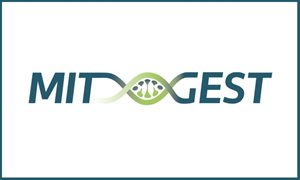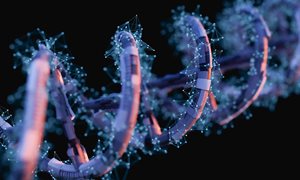
Recently, on the first of July, Werner Koopman, theme Metabolic diseases, celebrated his 25th anniversary at the Radboudumc. After his training to become a biochemical engineer, he studied chemistry at the former ‘Catholic University Nijmegen’, followed by a PhD in Cellular Animal Physiology at the same university. During his PhD, he became fascinated by the biochemistry of the living cell and the possibilities to visualize this using a microscope. In the following 25 years, he has expanded this research with great effort at the department of Biochemistry at the Radboudumc.
All these years his creed had been ‘from images to numbers’: microscopy images from biochemical processes in single cells are only informative when you are able to obtain quantitative information from these images, which you can subsequently analyze statistically for large numbers of cells. An excellent description of his approach can be found in his publication in the New England Journal of Medicine (N Engl J Med 2012; 366:1132-1141): a unique approach for which he received great (inter)national recognition, leading to numerous collaborations and participation in large (European) projects.
One of the key points of his research is (dys)function of mitochondria, the powerhouses of our cells. This research has contributed to the establishment of the company Khondrion, which aims to develop therapies to combat mitochondrial diseases. Because of his specific expertise, he was recently given a part-time appointment at the Department of Human and Animal Physiology at Wageningen University and Research, which is an important contribution to the collaboration between both universities. ~ Peter Willems
Related news items

Hans Spelbrink is beneficiary of the MITGEST Doctoral Network which receives 2.6 million euros funding (PhD positions available)
27 September 2022EU has granted the new Doctoral Network “MITGEST” (Quality Control of the Mitochondrial Gene Expression System in Health and Disease), of which Radboudumc is one of the partners, with 2.6 million euros of funding under the Marie Sklodowska-Curie Actions.
go to page
Towards a better understanding of Leigh Syndrome pathology and intervention published in Brain
8 December 2021 Melissa van de Wal and colleagues recently published a comprehensive review in the journal Brain on how Ndufs4 knockout mouse models have been used to unravel the pathomechanism of Leigh Syndrome. go to page
New genetic defect links cell biology and protein glycosylation
10 November 2021 Peter Linders, Dirk Lefeber and Geert van den Bogaart together with international colleagues have recently reported on novel cell biological insights, by identifying a genetic disorder in syntaxin-5 which allowed to unravel a new mechanism regulating intracellular transportation. go to page
Grant to study mitochondrial morphofunction in Parkinson’s disease
14 March 2019 Werner Koopman, theme Mitochondrial diseases, received 400,000 euro as a member of the PD-MitoQUANT consortium. The latter is an EU-funded Innovative Medicines Initiative research project that will improve our understanding of Parkinson’s so that better treatments can be developed in the future. go to page
Biodegradable nanoreactors demonstrate ROS shielding in human-complex-I-deficient fibroblasts
9 July 2018 Researchers of the Radboudumc and colleagues have successfully developed enzyme-loaded polymersomal nanoreactors capable of undergoing cellular integration in a controlled fashion and, subsequently, function as synthetic organelles. go to page
